Festival de la Juventud de Geumcheon (금천청년축제)
14.3Km 2025-09-03
Siheung-daero 73-gil 70, Geumcheon-gu, Seúl
010-9771-2090
Chungmuro Busan Bokjip (충무로 부산복집)
14.3Km 2025-07-18
9-1, Jungdae-ro 27-gil, Songpa-gu, Seoul
The Hyooshik Aank Hotel Guri (더휴식 아늑호텔 구리점)
14.3Km 2025-04-21
81-7, Angol-ro, Guri-si, Gyeonggi-do
Tumba Real Donggureung en Guri (구리 동구릉) [Patrimonio Cultural de la Humanidad de la Unesco]
14.4Km 2023-02-20
Donggureung-ro 197, Guri-si, Gyeonggi-do.
Donggureung se ubica en un área de vastos bosques y es el lugar donde descansan los cuerpos de los reyes de Joseon. Existen nueve mausoleos y diecisiete tumbas en total. El cementerio es grande en comparación con otros cementerios de Corea, y debido al extenso bosque de los alrededores, el paisaje es hermoso. Entre los nueve mausoleos se incluyen el del fundador de Joseon, el rey Taejo (quien reinó de 1335 a 1408), con el nombre de tumba Geonwonneung. Los mausoleos están rodeados de densos bosques y entre las tumbas hay senderos ideales para largas caminatas de ocio. Una de las partes especialmente famosas de Donggureung es el área donde crecen los juncos de eulalias púrpuras que tienen un gran significado histórico. Se dice que los altos juncos han sido transplantados desde la tierra natal del rey Taejo y por lo tanto llevan consigo los 600 años de la historia de Joseon.
Parque Nacional del Monte Bukhansan (Área de Dobong) (북한산국립공원(도봉 지구))
14.5Km 2020-12-31
Dobongsan-gil 86, Dobong-gu, Seúl
El monte Bukhansan, situado en el sector norte de Seúl, es hermoso a lo largo de todo el año. Designado Parque Nacional en 1983, la montaña en su conjunto mide 78,45 km de ancho, cubriendo 6 distritos de la ciudad y parte de la provincia de Gyeonggi-do. El nombre Bukhansan significa “montaña grande del norte” y también solía ser llamado "Samgaksan".
El monte Bukhansan tiene curvas tan suaves que sus sobresalientes y elevadas rocas de granito fueran a deslizarse en cualquier momento, y sus afilados picos contrastan con las docenas de valles y ríos que fluyen debajo. Su pico principal es Baegunbong y junto a este se elevan numerosos picos de diferentes tipos. Los picos de granito combinan bien con los árboles, y dentro de las extensiones de la montaña residen unas 1.300 clases de animales y plantas. De entre los picos de granito, se destaca la roca Giam del pico Insubong. Este pico de granito, famoso en todo el mundo, se eleva 200 m por sobre el nivel del mar y existe un centenar de senderos que conducen a él. Al llegar al punto panorámico Baegundae, si se mira hacia abajo, según el estado del tiempo, se verán las nubes, la ciudad de Seúl y el río Hangang en la misma escena.
Los picos del monte Bukhansan son ricos en historia, por lo que no carece de tesoros culturales, comenzando por el pilar Sunsubi sobre el pico Bibong que conmemora al rey Jinheung, pasando por la Fortaleza Bukhansanseong, edificada siguiendo las crestas de las sierras, y llegando al templo Sangunsa construido por el monje Wonhyo. Además de numerosos otros templos menores, la montaña está llena de riquezas culturales. La Fortaleza Bukhansanseong es, asimismo, un destino obligado para los que visitan la montaña por primera vez. Esta Fortaleza consistió en una muralla de aproximadamente 8.500 m de longitud, levantada específicamente para detener invasiones extranjeras, y es uno de los fuertes de montaña más representativos de la Era Joseon. En otoño, es especialmente exquisita la vista que se puede obtener de la montaña desde esta fortaleza.
Los templos son también patrimonios culturales representativos del monte Bukhansan, y entre muchos de ellos se destacan el templo Seunggasa, erigido en la ladera este del pico Bibong, donde las figuras de Seokgayeorae Maaebul se hallan grabadas en una roca de granito de 5 m de altura; y el templo Munsusa, ubicado a medio camino de ascenso al pico Munsubong, tiene el agua de montaña que cae del techo de la cueva Munsugul.
Así, el monte Bukhansan, con sus rocas de granito y la Fortaleza Bukhansanseong, tiene las cualidades perfectas para la práctica del montañismo en todas las estaciones del año. En primavera, florecen toda clase de flores y en verano, tupidos bosques y valles se extienden por doquier. Los senderos de ascenso que se extienden a lo largo de los valles pueden llegar quizá a ser el mejor de los cursos de montañismo que pueda haber para el verano. El otoño es especialmente la estación adecuada para visitar los templos y sus pabellones sumidos en los colores otoñales. En invierno, la escena de las sierras cubiertas de nieve es verdaderamente maravillosa. El Parque Nacional del Monte Bukhansan tiene numerosas atracciones montañosas y bellísimos paisajes y se ubica suficientemente cerca de la ciudad.
Por todo ello, a lo largo de todo el año, un gran número de visitantes pasan por ella. El promedio de visitantes anuales es de 5 millones, lo que le ha ganado el honor de ser registrado en el Libro de los Guinness de Récords Mundiales. Los fines de semana son particularmente concurridos.
Pista para Trineos de Nieve de Seoulland (서울랜드 눈썰매장)
14.5Km 2025-05-22
Makgye-dong, Gwacheon-si, Gyeonggi-do
La Pista para Trineos de Nieve tiene una superficie de 11.570 m², consta de la pista para adultos (50 m. de anchura y 100 m. de longitud) y la pista para niños (30 m de anchura y 45 m de longitud). Las pistas mantienen aquí una pendiente de 17º, lo cual aumenta la velocidad del trineo. En todos los rincones de la colina hay iglús y estufas, que proporcionan a los usuarios paisaje y recuerdos de buenos momentos. Hay dos tipos de trineo: el trineo de cámara de aire y el trineo de plástico, permitiendo a los visitantes elegir entre los dos. La pista para niños no es demasiado empinada, y proporciona seguridad con cojines de goma sujetos al trineo. Los personajes, tales como Santa Claus, Rodolfo, los muñecos de nieve, etc., también se suman a la diversión, pudiendo tomarse fotos con ellos.
Fortaleza Haengjusanseong (행주산성)
14.6Km 2025-10-30
Haengju-ro 15-beongil 89, Deogyang-gu, Goyang-si, Gyeonggi-do
La Fortaleza Haengjusanseong (Sitio Histórico), se encuentra ubicada en la cima del monte Deogyangsan, y fue el lugar en donde los coreanos derrotaron a los invasores japoneses durante la Guerra de Imjin. Las mujeres hicieron un gran aporte en esta batalla, ya que se encargaron de trasladar piedras sosteniéndolas en sus delantales (“haengju” en coreano). En particular, en el interior de la fortaleza se han encontrado cantidad de reliquias pertenecientes a la época de Baekje, aunque la fecha de la fabricación y el uso de los objetos está indeterminado. También se encuentra instalada la construcción Chungjangsa, que es un monumento establecido en honor al general Gwon Yul, a quien se le debe la victoria de la Batalla de Haengju. La instalación de carreteras y puentes en el área ha facilitado el acceso de los vehículos, por lo que es frecuentado por cantidad de turistas en los fines de semana y en los días festivos.
Aldea Gastronómica de la Fortaleza Haeungjusanseong (행주산성먹거리촌)
14.6Km 2025-11-12
Haengju-ro 15-beongil 89, Deogyang-gu, Goyang-si, Gyeonggi-do
Parque de Atracciones Seoulland (서울랜드)
14.7Km 2023-02-21
Gwangmyeong-ro 181, Gwacheon-si, Gyeonggi-do.
Seoulland es el primer parque temático de Corea y el monte Cheonggyesan que lo rodea tiene una belleza particular. En Seoulland están la Plaza del Mundo, donde se exponen obras de arquitectura tradicional y piezas folclóricas de todo el mundo; el Jardín Samcheonni, donde se puso énfasis en el disfrutar de los objetos tradicionales coreanos; el País Modelo, que recuerda el período de la conquista del oeste norteamericano; y el País de las Maravillas. En total hay cinco parques temáticos que componen Seoulland. En cuanto a juegos de recorrido están el Crucero Espacial, el Hoyo Negro 2000, el Tren de la Galaxia, las Corrientes Rápidas, la Alfombra Mágica, entre un total de 40 juegos, y también dispone de espectáculos en el Teatro de Aventuras, Salas de Cine, el País de los Cuentos, entre otros.
El orgullo de Seoulland es la variedad de festivales según las estaciones que organiza y el espectáculo nocturno de rayos láser. Seoulland, levantada sobre una gran extensión de tierra, alberga varios festivales en cada estación del año. De abril a mayo, el Festival de los Tulipanes; de julio a agosto, el Festival de las Rosas Estelares; de septiembre a octubre, el Festival de los Crisantemos; y de diciembre a febrero, el Festival de las Luces sobre Nieve.
Puesto que el Parque de Diversiones Seoulland tiene cerca al Gran Parque de Seúl, el Bosque de Relajación del Monte Cheonggyesan, el Museo Nacional de Arte Contemporáneo y otras excelentes atracciones turísticas, es hoy en día uno de los destinos más populares para el descanso.
Mercado Tradicional de Gwangmyeong (광명전통시장)
14.7Km 2024-02-21
Gwangi-ro 13-beongil 17-5, Gwangmyeong-si, Gyeonggi-do.
El Mercado Tradicional de Gwangmyeong puede rastrear sus orígenes a principios de la década de 1970, cuando se abría un pequeño mercado cada 5 días. En la actualidad, son más de 350 los puestos y las tiendas. El de Gwangmyeong es el más famoso entre los 3 mercados tradicionales principales de la provincia de Gyeonggi-do. Gracias a una remodelación a gran escala, ahora el mercado es un lugar agradable y conveniente para hacer compras, no muy diferentes a los hipermercados modernos.
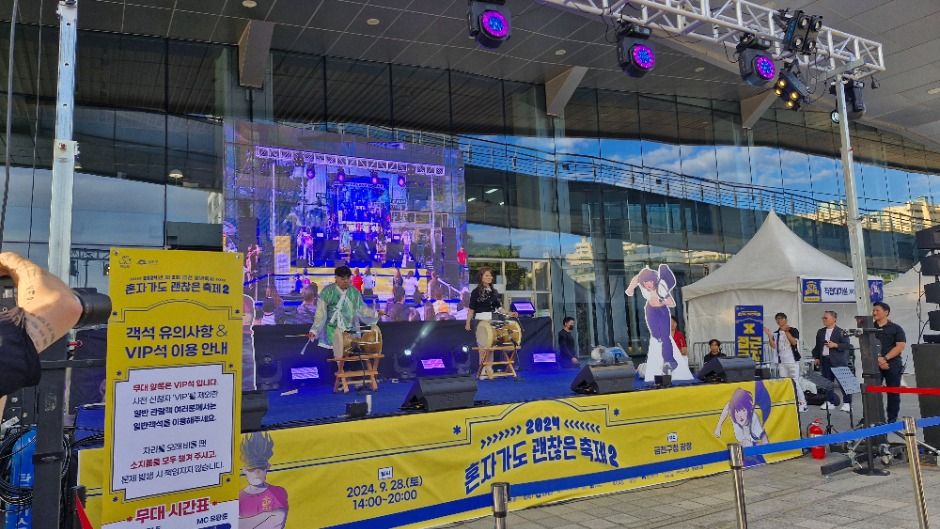

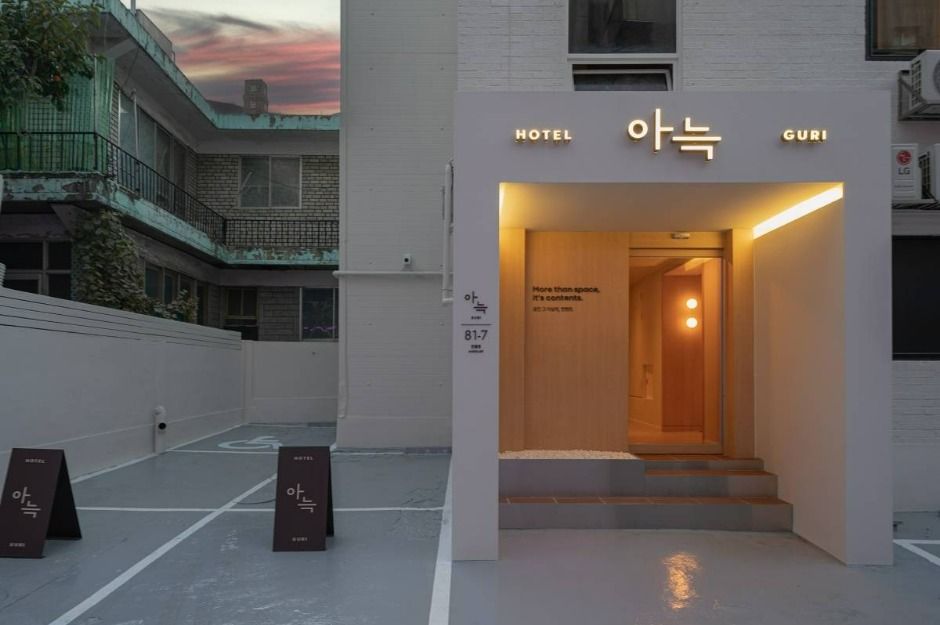
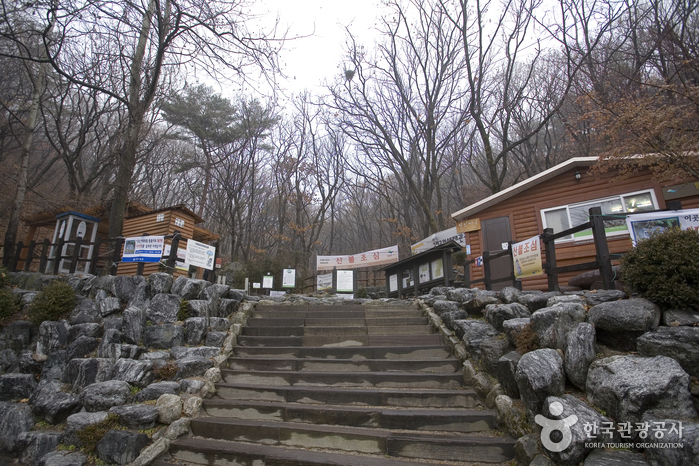

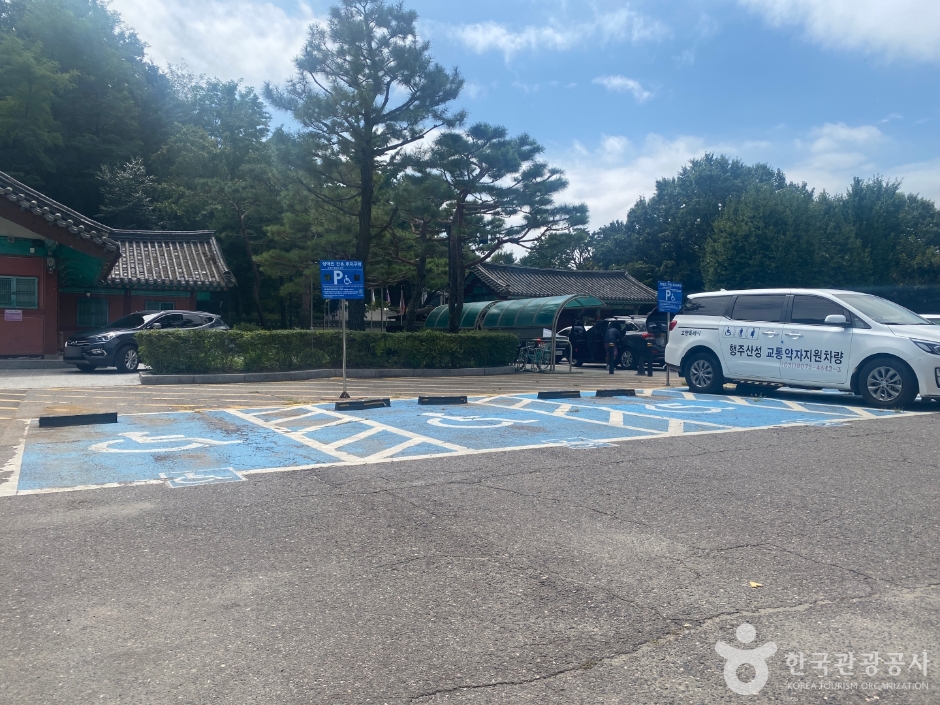
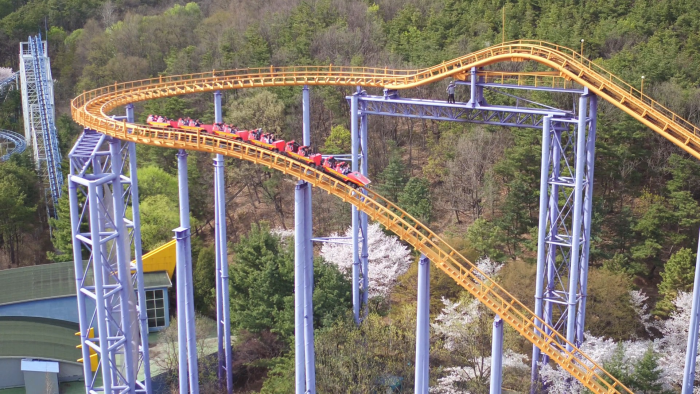
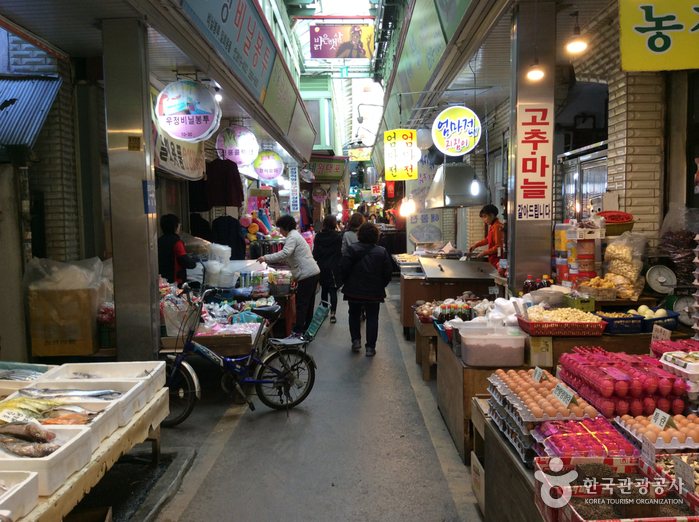
 Español
Español
 한국어
한국어 English
English 日本語
日本語 中文(简体)
中文(简体) Deutsch
Deutsch Français
Français Русский
Русский